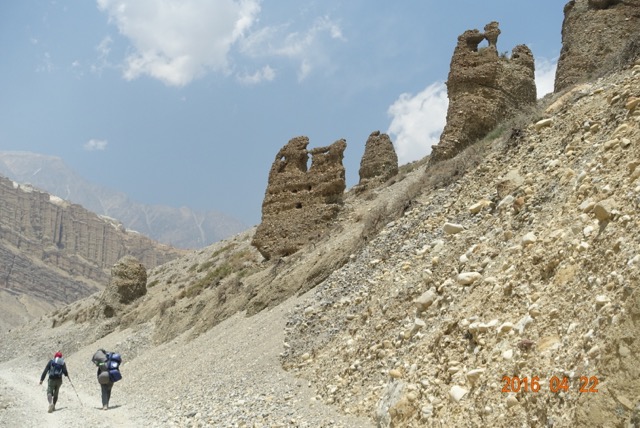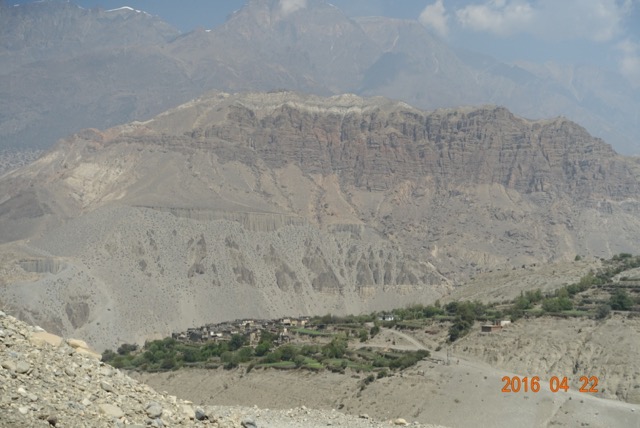Jomsom Airport sits on a low plateau just west of the Kali Gandaki river. Both north and south, the riverbed spreads out nearly a mile wide, filled with rocks sized between walnuts and melons, brought down from the barren Himalayan summits by the rare but torrential rains which manage to leak past the Annapurna/Dhaulagiri crest bisecting the town.
Those highlands were once a seabed, and if you look carefully as you step, you may find a dark stone, standing out from the lighter grey mass of variegated gravel. Picking it up, if you see a spiral image embedded within, you have found a Saligram.
Western scientists have labelled, classified, and dated these fossils as being from 150,000,000 years ago, an ocean dwelling, now extinct creature, called an Ammonite. Although similar in appearance to the Nautilus, they are actually more closely related to the octopus or squid. The spiral ribbed shell is what gives them their distinct and pleasing appearance.
But Hindus of Nepal and India worship them as the physical manifestation of the god Vishnu. And Buddhists see them as blessed by the female sky-dancing Dakinis, who carry the souls of the dead to the sky. So our guides spend much of their time walking north on the riverbed out of Jomsom, heads down, picking up and discarding fist sized and smaller dark rocks, examining them carefully for the presence of Vishnu. The spiritual connection is somewhat vestigial, though, as good specimens specifically from the Kali Gandaki can go for anywhere from $100-1000 when exported to the west.
The land has been folded back on itself several times as the Indian sub-continent pushed north under the main bulk of Asia. The cliffs abruptly rising from the flat rocky surface of the river reveal this tectonic corrugation. In some sections, the many layers of ancient seabed are level, stacked neatly on top on one another. In others, the land appears to have been tilted a full 90 degrees, then folded like an accordion.
In places, the occasional monsoon rains have washed away the softer dirt surrounding the rock, and left red hoodoos, looking like abstract statues made of aggregate concrete.
In the midst of the dry, lifeless land, we pass by several settlements, their irrigation fed greenness standing in sharp contrast to and defiance of the harshness all around. All about these small towns, terraces sprout, farming plots for local staples such as barley, tubers like carrots and potatoes, and apple trees. After walking over the river stones for two hours, we stop at a teahouse snuggled between the cliffs and river.
Chaim, our guide, asks me if I’m ready for lunch. Well, why not? He produces a single page menu. The only thing I’ve heard of on the list is “Dhal Bat”, so I go for it. This staple of the Nepali diet is a catch all term, meaning, “rice, maybe some bean slurry, and whatever the cook has around and wants to heat up.” It’s either delicious, or I am famished, or possibly both. Accompanied by lemon/ginger tea, it both fills me up, and has me ready to face another walk, to Kagbeni, about an hour away.




